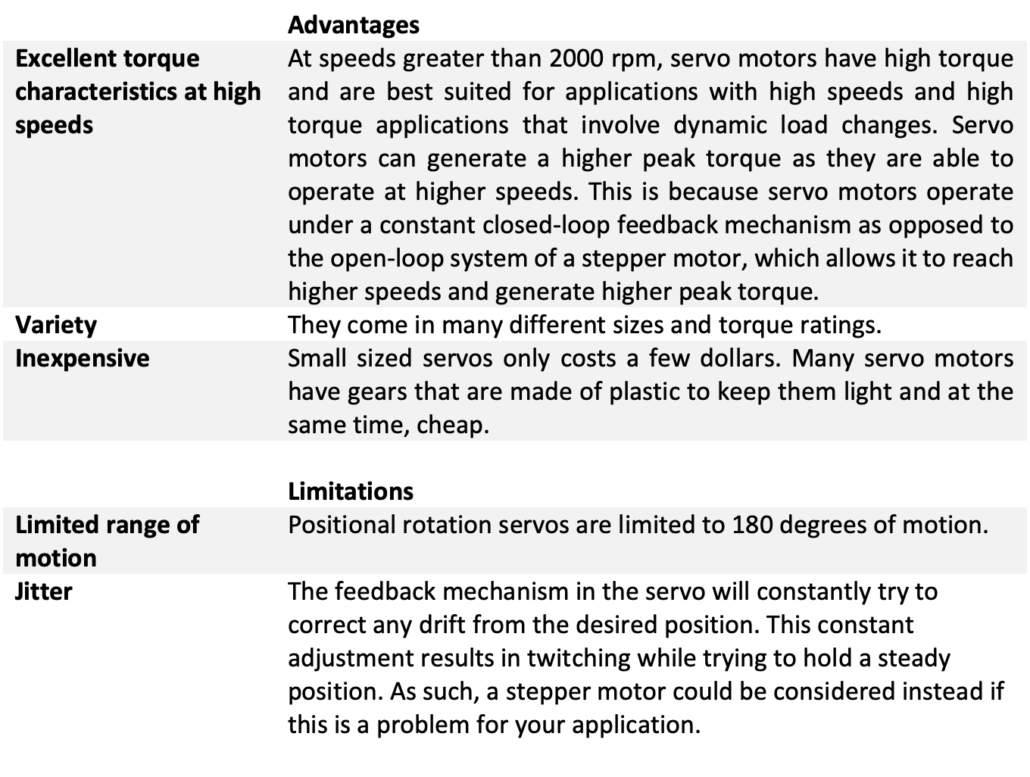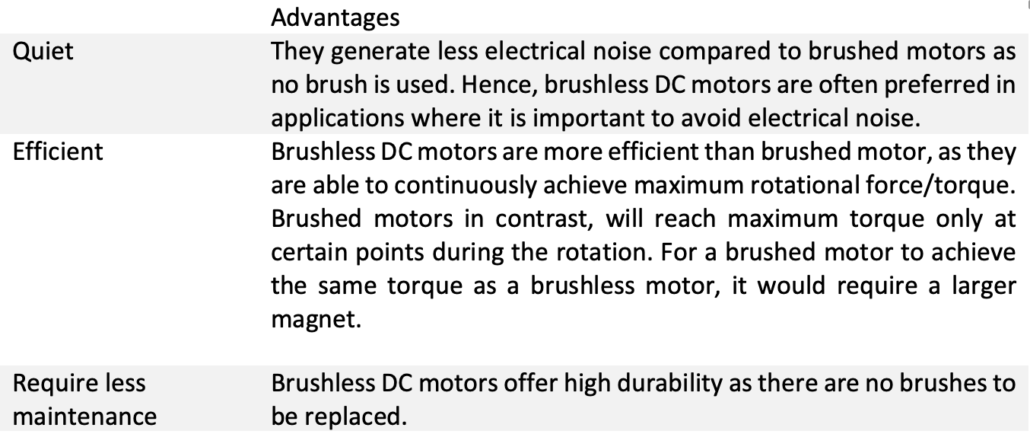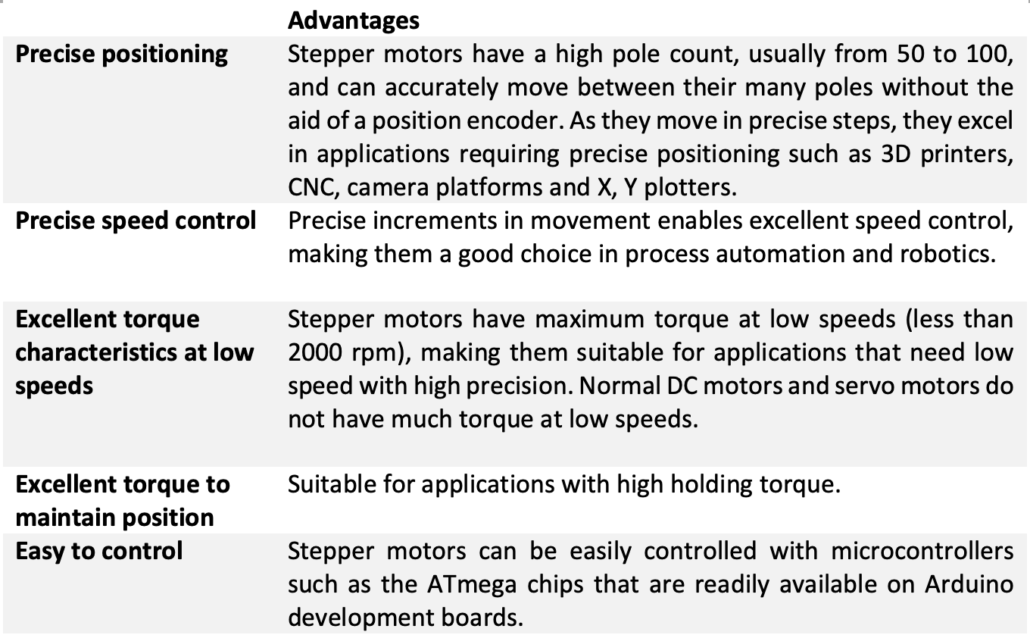1. Brushed and Brushless DC Motors
DC motors are electromagnetic devices that use the interaction of magnetic fields and conductors to convert electrical energy to mechanical energy for rotation. There are many types of DC motors out in the market. The brushed and brushless motors are the most common DC motors.
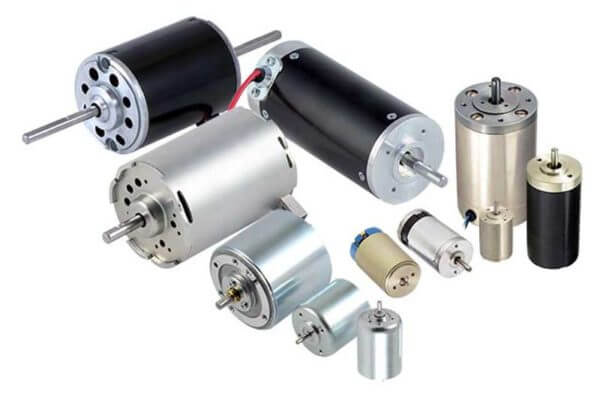
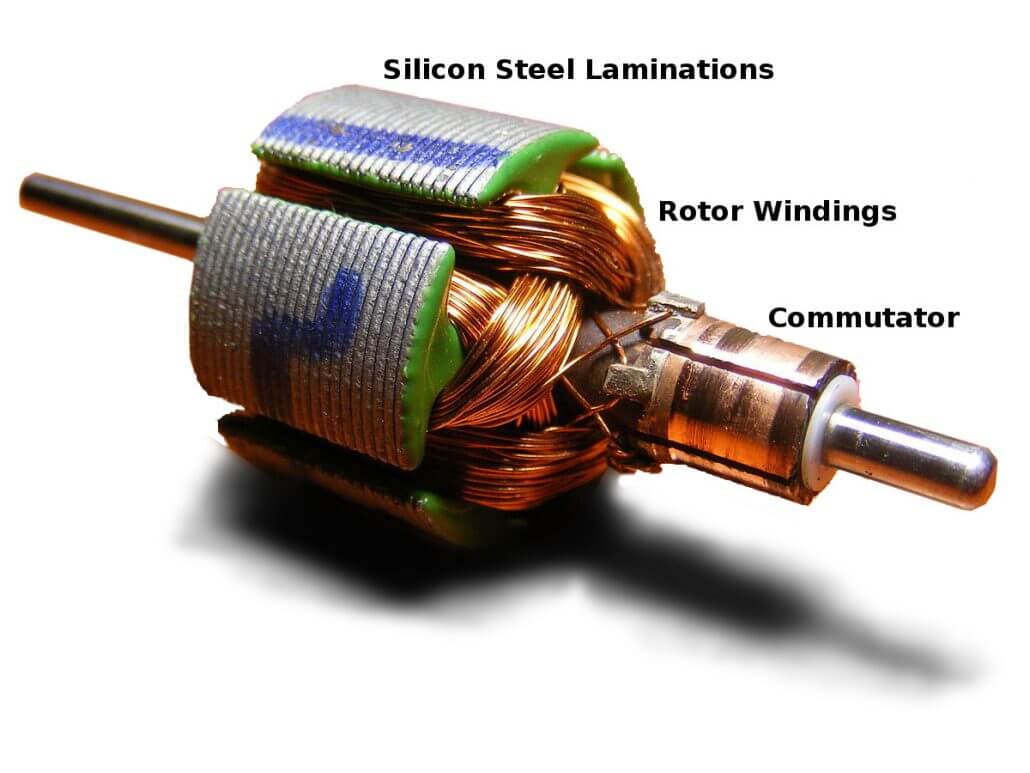
Brushed DC Motors
The brushed DC motor has been around for a long time, and its use can be traced back to the 1830s. They are every way. In toys, household appliances, computer cooling fans, you name it. As one of the simplest motors to construct and control, it is no wonder that the brushed DC motor still remains a favourite among professionals and hobbyists alike.
Why are they called brushed motors? The current is provided via two stationary metallic brushes that make contact with the different segments on the ring. As the commutator rotates, the brushes make contact with the next segment and therefore continue the rotation of the motor. As you can imagine, this generates friction and so heat and even generated sparks.
Working Principle:
How does a DC motor move? DC motors include two key components: a stator and an armature. The stator is the stationary part of a motor, while the armature rotates. In a DC motor, the stator provides a rotating magnetic field that drives the armature to rotate. A pair of magnets, or a stator envelopes the coils in an electric field by surrounding the coils. When current passes through a wire in a magnetic field, the wire experiences a force, and so the coils in the motor experience a force that pushes the coil and begins the rotation. The GIF below illustrates the working principle of the brushed motor.
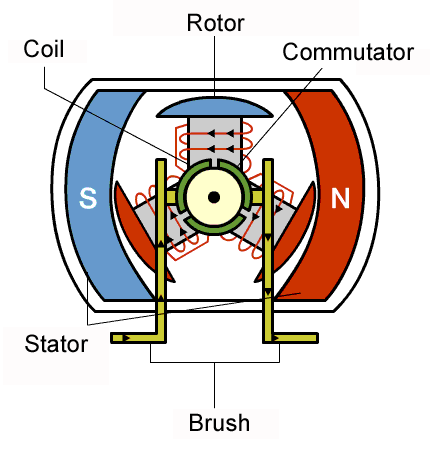
The coil experiences a downward force when it reaches the area on the right, and an upward force when it reaches the area on the left. By adding multiple coils attached to different segments on the commutator, it can maintain steady rotation. You can reverse the direction of rotation simply by reversing the polarity on the motor’s contacts.
Advantages & Limitations of Brushed DC Motor

Find inexpensive DC motors
Applications of Brushed DC Motors:
Nowadays, some might claim that the brushed DC motors are no longer relevant as the brushless motor has displaced it from many applications. However, that is definitely not the case.
Brushed motors can still be the best solution for many industrial applications that require constant torque across the motor’s entire speed range. Uses include mobile phone vibrators, toys, handheld fans, cordless drills and car windows among many things.
Depending on the needs of your application, the brushed DC motor might be the more suitable option. If a simple control scheme and low cost is your primary concern, consider the use of a brushed DC motor.
Brushless DC Motors
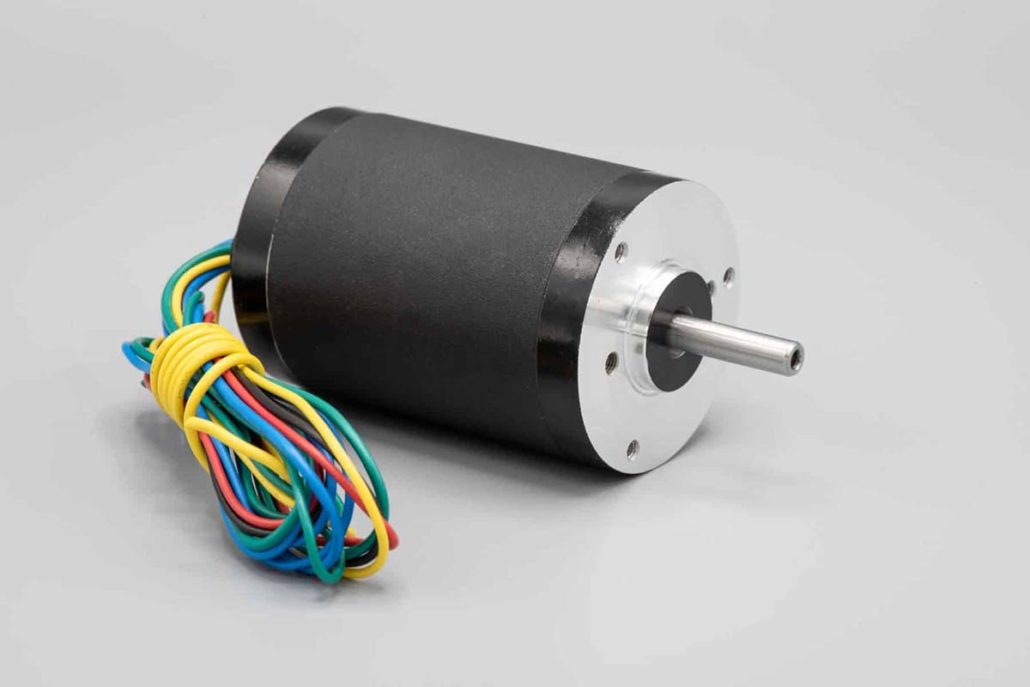
Brushless DC motors are mechanically simpler than brushed ones. As commutation is achieved electrically, the sparks and noise of brushed DC motors is eliminated, enabling the current flow to switch silently and therefore allowing the motor to be driven quietly. These quiet motors find applications in computer fans, disk drives, drones, electric vehicles and high-precision servomechanisms.
Working Principle Brushless DC motors:
The brushless DC motor only has one moving component – the rotor, which eliminates the complications caused by brushes in brushed motors. And also unlike brushed motors, the rotor consists of a ring of permanent magnets, whereas the coils are stationary. This set-up eliminates the need for brushes.
The difficult part comes in controlling the polarity of the current flowing through the coils and keeping this in sync with the speed of the rotor. This can be achieved by measuring back EMF or using Hall effect sensors to directly measure the position of the magnets.
Due to this, brushless DC motors are typically more expensive and complex, in spite of the numerous advantages it has over brushed DC motors.
Advantages & Limitations of Brushless DC Motors:
Applications:
Thanks to their efficiency and durability, the brushless DC motors have largely supplanted their brushed counterparts. They find a wide range of applications in devices that run continuously, such as washing machines, air conditioners, and in consumer electronics like computer fans and disk drives. More recently, they are used for drones as the rotational speed of each rotor can be precisely controlled. In the near future, we can definitely expect more applications for brushless motors!
2. Stepper Motors
Stepper motors are motors that move in slow, precise and discrete steps. Valued for their precise position control, they find a myriad of applications such as desktop printers, security cameras, and CNC milling machines.
Working Principle:

An operating Stepper motor
(Source: emmeshop)
Stepper motors have a controller system that sends electrical pulses to a driver, which interprets these pulses and sends a proportional voltage to the motor. The motor then moves in accurate and fixed angle increments, hence the name “stepper”. The stepper motor works similarly to brushless DC motors, except that it moves in much smaller steps. Its only moving part is also the rotor, which contains the magnets. An alternating current controls the polarity of each coil. As the polarity changes, each coil gains push or a pull effect, thus moving the motor.
We can use commonly available and cheap microcontrollers to control stepper motors. However, a stepper motor is a power-hungry device that constantly draws maximum current. The small steps it takes also means that it has a low top speed, and steps can potentially be skipped when high loads are used.
Advantages & Limitations of Stepper Motors:
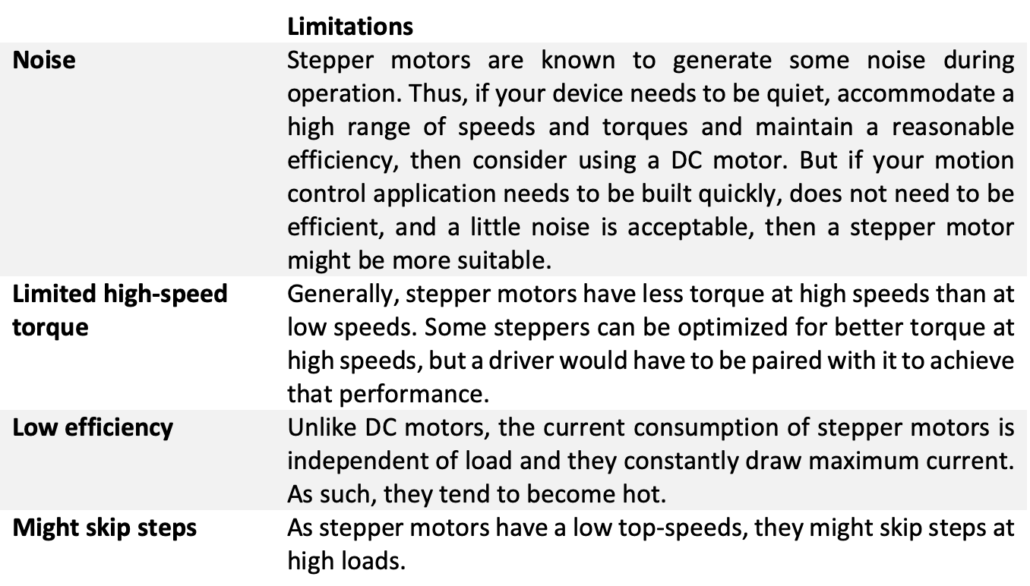
Applications of Stepper Motors:
Stepper motors are diverse in their uses and are found in a myriad of common machines and equipment. They are useful in applications that require accurate positioning, low speed torque, and speed control. Applications include CNC milling machines, medical imaging machinery, printers, car side mirror tilts, security cameras, robotics, and more recently, 3D printers.
3. Servo Motors
Servo motors are motors capable of providing very precise motion control. The feedback in a servo motor system senses the difference between the actual and desired speed or position so that the controller can adjust the output to correct any drift from the target position. The positional rotation and continuous rotation are two basic types of servo motors

Working Principle:
The servo motor consists of a DC motor but not Servo motor. DC motors spin at high rpm and very low torque. However, inside a servo motor, there is an arrangement of gears that will take the high speed of the internal DC motor and slow it down, while at the same time increasing the torque. Thus, the gear design rotation speed of the servo is much slower but with more torque. Gears in a cheap servo are typically made of plastic to keep it light and to keep the costs down. But for servo motors designed to provide more torque for heavier work, they usually use metal gears.
A servo contains a positional sensor, or encoder, on the final gear. Based on closed-loop control, the microcontroller compares the actual position of the rotor to the desired position and generates an error signal. This error signal is then used to generate the appropriate control signal to move the rotor to the final position. More sophisticated servos also measure speed to provide more precise and smoother movement.
Positional rotation servos – Widely used for small-scale projects where moderate precise positioning is required, this is the most common and inexpensive type of servo motor. This servo motor rotates within a 180 degrees range. They do not provide speed control or continuous rotation. It has physical stops built into the gear mechanism to prevent turning beyond these limits to protect the rotational sensor.
Continuous rotation servos – Unlike the positional rotation servos, the continuous rotation servo can turn clockwise or anti-clockwise continuously, at varying speeds depending on the command signal.
Here’s an animation from learnchannel about the functioning of a servo motor and how the components of a servo drive system work together.
Advantages & Limitations of Servo Motors:
